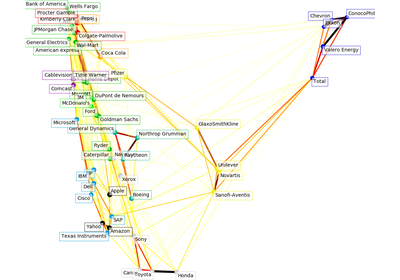sklearn.cluster.affinity_propagation¶
-
sklearn.cluster.affinity_propagation(S, preference=None, convergence_iter=15, max_iter=200, damping=0.5, copy=True, verbose=False, return_n_iter=False)[source]¶ Perform Affinity Propagation Clustering of data
Read more in the User Guide.
Parameters: S : array-like, shape (n_samples, n_samples)
Matrix of similarities between points
preference : array-like, shape (n_samples,) or float, optional
Preferences for each point - points with larger values of preferences are more likely to be chosen as exemplars. The number of exemplars, i.e. of clusters, is influenced by the input preferences value. If the preferences are not passed as arguments, they will be set to the median of the input similarities (resulting in a moderate number of clusters). For a smaller amount of clusters, this can be set to the minimum value of the similarities.
convergence_iter : int, optional, default: 15
Number of iterations with no change in the number of estimated clusters that stops the convergence.
max_iter : int, optional, default: 200
Maximum number of iterations
damping : float, optional, default: 0.5
Damping factor between 0.5 and 1.
copy : boolean, optional, default: True
If copy is False, the affinity matrix is modified inplace by the algorithm, for memory efficiency
verbose : boolean, optional, default: False
The verbosity level
return_n_iter : bool, default False
Whether or not to return the number of iterations.
Returns: cluster_centers_indices : array, shape (n_clusters,)
index of clusters centers
labels : array, shape (n_samples,)
cluster labels for each point
n_iter : int
number of iterations run. Returned only if return_n_iter is set to True.
Notes
For an example, see examples/cluster/plot_affinity_propagation.py.
References
Brendan J. Frey and Delbert Dueck, “Clustering by Passing Messages Between Data Points”, Science Feb. 2007


